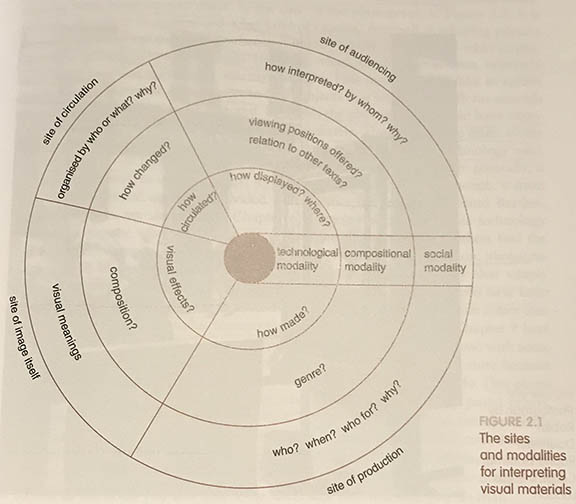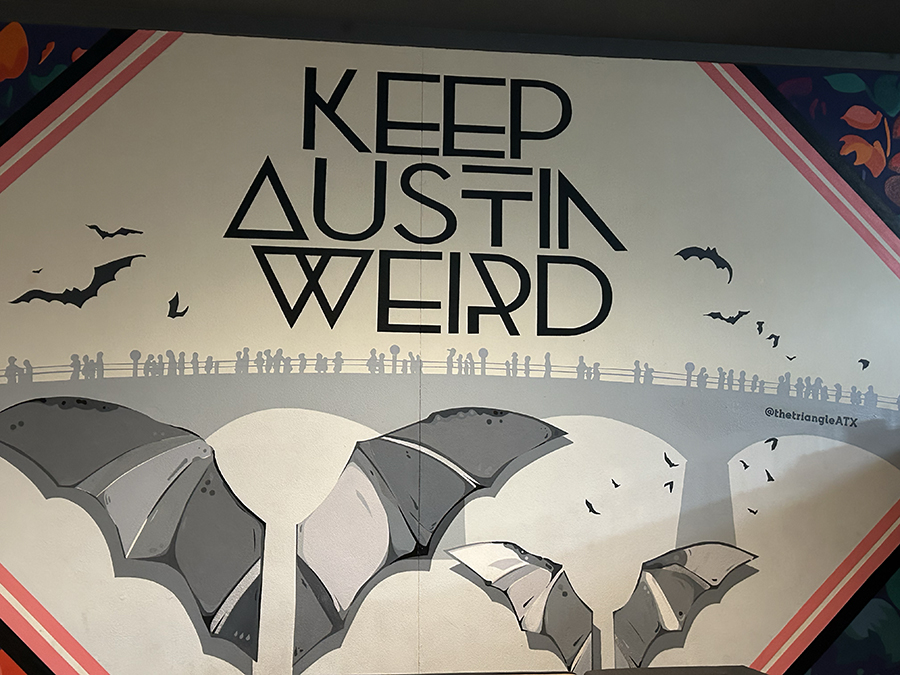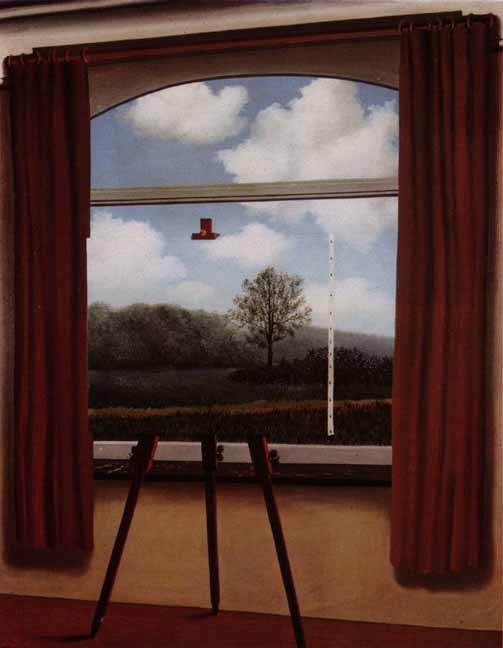| Visual/Material Communication |
 |
   |
| COM 75-474 | Spring 2024 |
| Visual/Material Communication |
 |
   |
| COM 75-474 | Spring 2024 |
Introduction to Critical Visual Methodologies
key concepts:
Critical visual methodologies focus on a matrix of four sites and three modalities (see p. 19-20). Each theoretical and methodological approach performs a certain commitment to understanding the relative importance of particular intersections between sites and modalities. Thus, Rose argues, "Theoretical debates about how to interpret images can be understood as debates over which of these sites and modalitites is most important for understanding an image, and why" (26-7).
sites: production, image, circulation, audience
modalities: technological, compositional, social

5 main themes in visual culture studies:
Summarized on page 43, modified here to include both images and objects:
An image or object may have its own effects; these effects, through the ways of seeing and doing mobilized by the image or object, are crucial in the production and reproduction of social differences; but these effects always intersect with the social context of practices of looking and practices of doing things with objects, including how they are circulated and the visualities and materialities brought to bear on images and objects as they are used in specific contexts and for specific purposes. (Rose 43)
3 criteria for a critical visual methodology:
* Takes images seriously
* Thinks about social conditions of circulation, looking, and being looked at
* Is reflexive
Doisneau image (Fig 3.2) as case study, (pp. 48-69 and charts: Figures 3.1 & 3.2)

key terms:
representations (17)
representational vs nonrepresentational (28)
vision/visuality (17)
visual culture/cultures (20, 40)
softimages (Hoelzl & Marie) (25)
affordances (26)
affect (27)
operative images (28)
visual economy (31)
found images vs. made images (37)
ways of seeing (39)
image/object circulation (42)
image/object agency (42-3)
genre (50)
remediation (Bolter & Grusin) (51)
aura (Benjamin) (59)
audiencing (Fiske), audience vs. user (60)
convergence (65)
medium (66-67)
analyzing "the spatial organization of looks" within photographs (56)
algorithms (58)
quotes for discussion:
Modifying a quote from Mitchell to articulate the central question of Visual/Material Communication: Who or what communicates what to whom with what visual or material means, and where, when, how, and why? (Rose 41)
"Visual images are always practised in particular ways, and different practices are often associated with different kinds of images in different kinds of spaces." (Rose 61)
"Our use of images, our appreciation of certain kinds of imagery, performs a social function as well as an aesthetic one. It says something about who we are and how we want to be seen." (Rose 68)
Workshop Images





